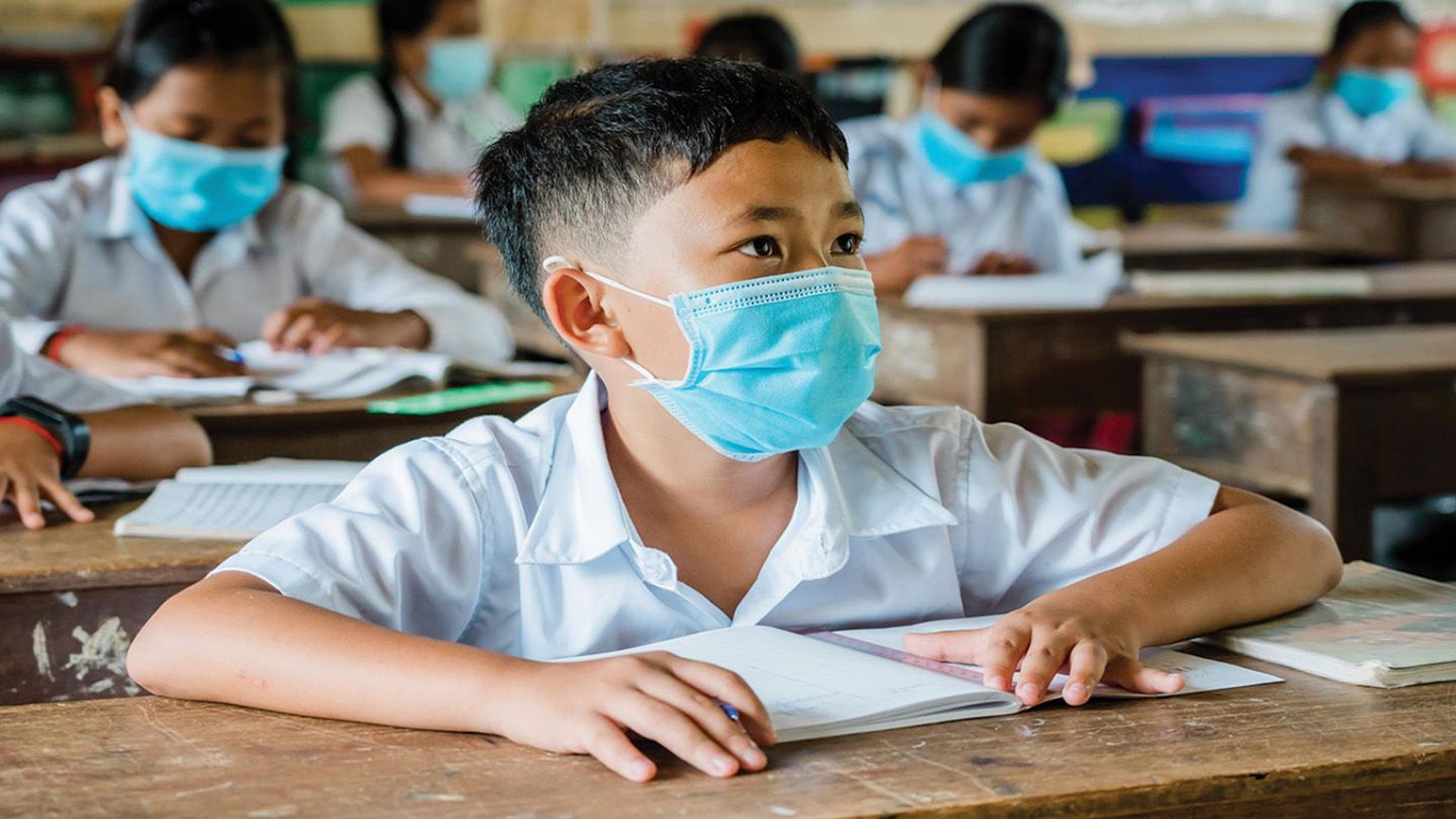In-person classes will be pilot-tested beginning November 15 for public schools and November 22 for private schools. The Department of Education has identified 90 out of 100 targeted public schools for in-person classes but did not name them.
THE Department of Education is targeting 100 public schools in its pilot-testing of in-person classes even when a small percentage of students have availed, or are even aware, of vaccines that they can already get.
DepEd has already identified an initial batch of 90 of 100 schools but did not name them even as several public schools in Manila have volunteered. It is currently making a risk assessment of 20 private schools for possible inclusion in this pilot test.
The target date for the pilot run is November 15 for public schools and November 22 for private schools.
“The public response has been very good because they have been waiting for this for so long. We are taking all the possible precautions because we know that the President does not want to expose learners, teachers and staff to danger,” Education Secretary Leonor Briones said at a Palace briefing.
Some backed out
The 90 identified schools for the pilot test are located in different regions of the country except Metro Manila, Cagayan Valley, Cordillera Autonomous Region, Mimaropa and the Bangsamoro Autonomous Region in Muslim Mindanao.
According to Briones, some local governments have backed out from allowing the resumption of classes due to changing risk assessments, but there have also been those, which have written the DepEd to seek inclusion in the pilot program due to improving COVID-19 numbers.
Safety concerns
Some parents are also concerned about the safety of their children with COVID still very much around, she noted.
If they change their minds about allowing children to return to school, the DepEd will not force them to do so, she said.
The DepEd’s obligation is to explain to them that it has taken all possible precautions necessary to keep students and the schools safe, she added.
She also said that in the 90 public schools so far allowed to hold in-person classes, 93.2 percent of the personnel were already vaccinated. But what about the students, esp. those residing in homes where some of their companions still have vaccine hesitancy?
“Of course, there is a preference, and the parents have also expressed this, that they would want vaccinated staff and teachers to attend to their child,” she said.
The DepEd would coordinate with the National Task Force Against COVID-19 for the continued vaccination of school personnel.
Briones also said that before students would be allowed to return to the classrooms, there would be an orientation for their parents, the local governments and the school personnel on the guidelines for the in-person classes.
Parents must know their roles because there have been instances when children have caught the coronavirus at home and in public transportation, she said.
The in-person classes would also be different from what was held before the pandemic struck, as students would only be allowed in school for a limited number of hours and at specific places, she said.
Similarly, the Food and Drug Administration is cautioning people not to let their guards down despite a big drop in COVID cases.
Metro Manila is still classified as a moderate-risk area,along with the Cordillera Administrative Region, Ilocos, and the Zamboanga Peninsula. The rest of the other regions are now classified as low-risk areas.
FDA Director General Eric Domingo said the average reported COVID-19 cases have been going down, but four regions have registered a slower decrease in infections, Domingo said citing Mimaropa (Region 4-B), Bicol (Region 5), Central Visayas (Region 7), and Eastern Visayas.
“The downtrend is continuous, but there was a slowdown in the downtrend in these regions. So, we have to monitor them more closely,” Domingo said.
He presented the average daily attack rate (ADAR) — or the rate of infection per 100,000 people of a particular area — in those areas namely: Mimaropa the ADAR decreased only slightly — from 7.68 to 6.96 — and its growth in cases decreased by only 9 percent in the past two weeks; Bicol Region — from 5.68 to 4.38; Central Visayas — from 5.25 to 3.68 and Eastern Visayas from 3.04 to 1.83.
Regions where ADAR declined significantly are: CAR from 49.00 to 25.72; Ilocos Region (Region 1) — from 34.41 to 17.64; and Metro Manila — from 17.46 to 8.26.
However, these three areas, along with the Zamboanga Peninsula (Region 9), are still classified as moderate risk areas, while the rest of the other regions are classified as low risk.
“We can see in the daily reported cases that they are going down in the entire Philippines,” he added. ºThis week, we went down by 35 percent as compared to last week.Last week, the decrease was only 31 percent.”
Last Saturday, independent analytic group OCTA Research said that the reproduction rate for the entire Philippines had dropped to 0.52.
Tags: #DepEd, #publicandprivateschools, #in-personclasses, #education
